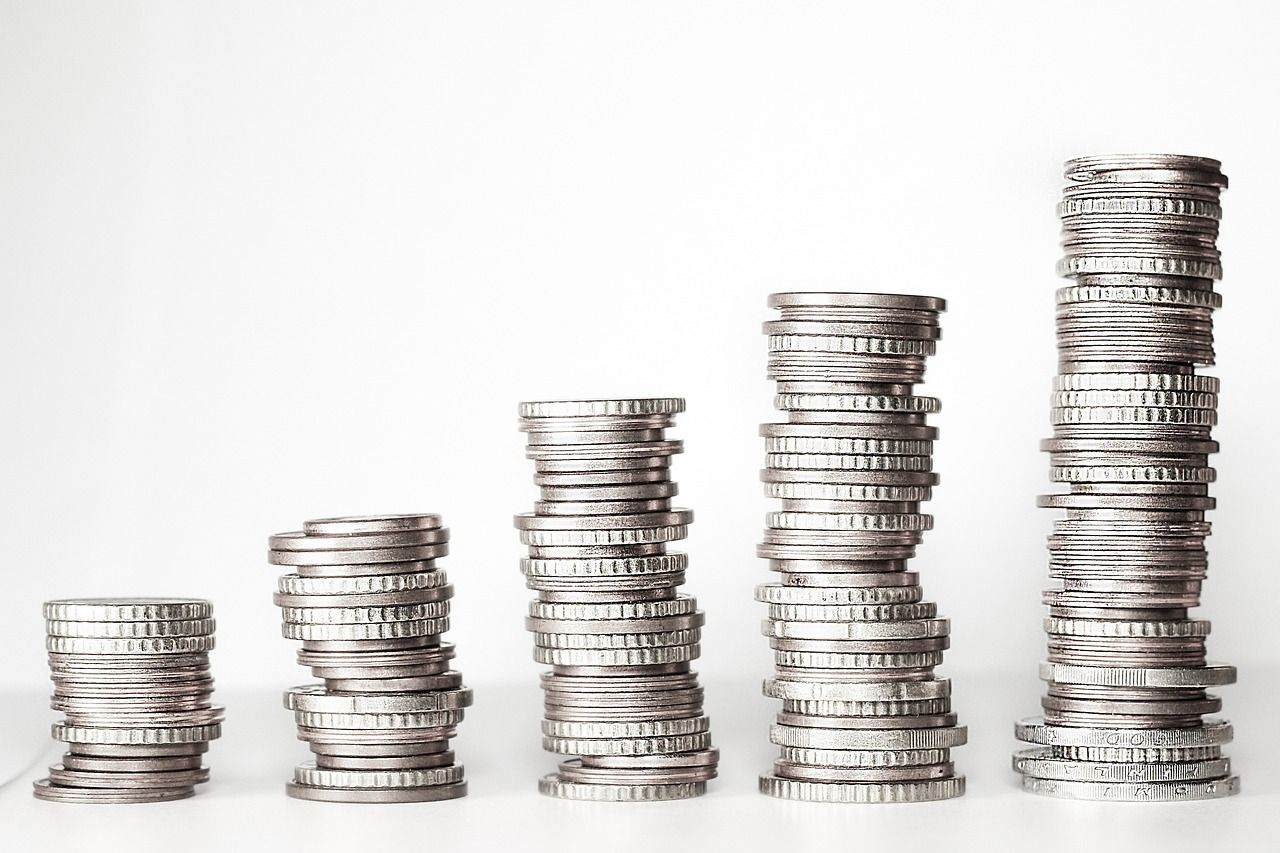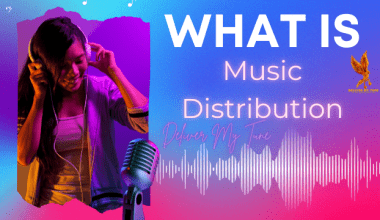How Do Artist Make Money from Streaming
In today’s digital age, streaming has become a dominant way for artists to distribute their music and reach a global audience. The shift from physical sales to digital streaming platforms has revolutionized the music industry, creating new opportunities and challenges for artists. This blog will explore how artists make money from streaming, the various revenue streams available, and tips for maximizing earnings in this ever-evolving landscape.
What is Music Streaming?
Music streaming involves delivering audio content over the internet to users who can listen to it in real-time without downloading it. Platforms like Spotify, Apple Music, Amazon Music, and YouTube Music have become the primary sources for listeners to access a vast library of music.
The Evolution of Music Streaming
The journey from physical media like vinyl records, cassettes, and CDs to digital downloads and now streaming has drastically altered how music is consumed. The convenience of streaming services, with their extensive libraries and ease of access, has led to their widespread adoption.
Revenue Models in Music Streaming
There are several ways that artists can earn money from streaming. Understanding these revenue models is crucial for artists to maximize their income from digital platforms.
1. Per-Stream Payouts
Most streaming services pay artists based on the number of times their songs are played. This model, known as per-stream payout, varies significantly between platforms. On average, artists can expect to earn between $0.003 to $0.005 per stream on major platforms like Spotify and Apple Music.
2. Subscription Revenue
Streaming platforms generate significant revenue from user subscriptions. Premium subscribers pay a monthly fee for ad-free listening and additional features. A portion of this subscription revenue is distributed to artists based on the share of streams their music receives.
3. Ad-Supported Revenue
Free tiers of streaming services, supported by advertisements, also contribute to artist earnings. Although the per-stream payout from ad-supported streams is generally lower than from paid subscriptions, the large volume of free users can still generate substantial revenue.
4. Licensing and Royalties
Artists earn royalties from streaming services for the use of their music. These royalties include:
- Mechanical Royalties: Paid for the reproduction of music on digital platforms.
- Performance Royalties: Paid when music is streamed publicly.
- Synchronization Royalties: Earned when music is used in videos or commercials streamed on platforms like YouTube.
5. Direct Artist Payments
Some streaming services offer direct artist payments, allowing fans to contribute money directly to their favorite artists. Platforms like Bandcamp have been instrumental in promoting this model, which can significantly boost an artist’s income.
How Streaming Royalties are Calculated
The calculation of streaming royalties is a complex process influenced by several factors, including the platform’s payout rate, the artist’s share of total streams, and the agreements between artists, record labels, and publishers.
1. Pro Rata Model
Most streaming services use a pro rata model to calculate royalties. Under this model, the total revenue generated by the platform is pooled together and then distributed to artists based on their share of the total streams.
2. User-Centric Model
An alternative to the pro rata model is the user-centric model. Here, the subscription fee from each user is divided among the artists they listen to, potentially providing a fairer distribution of revenue, especially for niche and independent artists.
3. Factors Affecting Royalty Payments
Several factors can influence how much artists earn from streaming, including:
- Platform Popularity: More popular platforms generally have more subscribers and higher ad revenue, resulting in higher payouts.
- Geographic Location: Payout rates can vary by country due to differences in subscription prices and ad revenue.
- Label Agreements: Artists signed with major labels may receive different rates than independent artists due to negotiated contracts.
Maximizing Earnings from Streaming
To maximize earnings from streaming, artists need to adopt strategic approaches to their music distribution and promotion.
1. Distribute Your Music Widely
Ensuring your music is available on multiple streaming platforms can increase your reach and potential earnings. Using digital distribution services like TuneCore, DistroKid, or CD Baby can help get your music on all major streaming services.
2. Promote Your Music Actively
Promotion is key to increasing streams. Utilize social media, email newsletters, and collaborations with other artists to promote your music. Engaging with fans through live streams and Q&A sessions can also boost your visibility and streams.
3. Optimize Your Streaming Profiles
Ensure your artist profiles on streaming platforms are complete and optimized. Use high-quality images, update your bio, and regularly add new content like singles, albums, and playlists to keep your profile active and engaging.
4. Leverage Playlists
Getting your music featured on popular playlists can significantly increase your streams. Submit your songs to playlist curators and use platforms like Spotify for Artists to pitch your music to editorial playlists.
5. Engage with Your Audience
Building a loyal fanbase can lead to more consistent streams. Engage with your audience through social media, respond to comments, and create exclusive content for your followers. Fan engagement can translate to higher streaming numbers and increased revenue.
6. Utilize Data and Analytics
Use the analytics provided by streaming platforms to understand your audience and their listening habits. This data can inform your promotional strategies and help you target the right demographics to increase your streams.
The Role of Digital Distribution Services
Digital distribution services play a crucial role in helping artists get their music on streaming platforms. These services handle the logistics of music distribution, allowing artists to focus on creating and promoting their music.
1. Distribution to Multiple Platforms
Digital distributors ensure that your music is available on all major streaming services, including Spotify, Apple Music, Amazon Music, and more. This wide distribution increases your potential reach and earnings.
2. Royalties Collection and Management
These services also manage the collection of royalties from various platforms, ensuring that artists receive their due payments. This can be particularly beneficial for independent artists who might not have the resources to track and collect royalties on their own.
3. Additional Services
Many digital distributors offer additional services like marketing, playlist pitching, and sync licensing opportunities, further enhancing an artist’s ability to earn from their music.
Future Trends in Music Streaming
The music streaming landscape continues to evolve, with new technologies and business models emerging. Understanding these trends can help artists stay ahead and maximize their streaming revenue.
1. Blockchain and Cryptocurrency
Blockchain technology has the potential to revolutionize the music industry by providing transparent and efficient royalty distribution. Platforms like Audius are already experimenting with blockchain to ensure fair compensation for artists.
2. Virtual Reality and Live Streaming
Virtual reality (VR) and live streaming are opening new revenue streams for artists. VR concerts and live streaming events allow artists to reach global audiences and monetize their performances in innovative ways.
3. Personalized Streaming Experiences
As streaming platforms continue to gather data on listener preferences, personalized streaming experiences are becoming more prevalent. This can lead to more targeted recommendations and potentially higher streaming numbers for artists who fit specific listener profiles.
4. Direct-to-Fan Platforms
The rise of direct-to-fan platforms like Patreon and Bandcamp enables artists to build closer relationships with their audience and receive direct financial support. These platforms can complement traditional streaming revenue and provide a more stable income source.
Glossary
Understanding the terminology used in the music streaming industry is essential for artists to navigate and maximize their earnings.
Streaming: Delivering audio content over the internet in real-time without downloading it.
Per-Stream Payout: Payment model where artists earn a small amount for each stream of their music.
Subscription Revenue: Income generated from users who pay a monthly fee for premium services on streaming platforms.
Ad-Supported Revenue: Revenue from advertisements played during streaming sessions on free tiers of streaming services.
Mechanical Royalties: Royalties paid for the reproduction of music on digital platforms.
Performance Royalties: Royalties paid when music is streamed publicly.
Synchronization Royalties: Royalties earned when music is used in videos or commercials.
Pro Rata Model: A royalty distribution model where total revenue is pooled and distributed to artists based on their share of total streams.
User-Centric Model: A royalty distribution model where each user’s subscription fee is divided among the artists they listen to.
Digital Distribution Services: Companies that distribute music to multiple streaming platforms and manage royalty collections.
Blockchain Technology: A digital ledger technology that can provide transparent and efficient royalty distribution.
Virtual Reality (VR): Technology that allows users to experience immersive, computer-generated environments.
Direct-to-Fan Platforms: Platforms that enable artists to receive direct financial support from their fans.
FAQs
1. How do artists make money from streaming?
Artists make money from streaming through per-stream payouts, subscription revenue, ad-supported revenue, licensing and royalties, and direct artist payments. Each stream generates a small payment, and the accumulated streams contribute to the artist’s overall earnings.
2. Which streaming platform pays artists the most?
The payout rates vary across platforms, but generally, Tidal and Apple Music are known to offer higher per-stream payouts compared to other services like Spotify and YouTube. However, the total earnings depend on the number of streams an artist generates on each platform.
3. How can artists increase their streaming revenue?
Artists can increase their streaming revenue by promoting their music actively on social media, engaging with fans, optimizing their profiles on streaming platforms, leveraging playlists, and distributing their music widely across multiple platforms. Additionally, utilizing data analytics to understand listener habits and targeting specific demographics can help boost streams.
4. What is the difference between mechanical and performance royalties?
Mechanical royalties are paid for the reproduction of music, such as when a song is streamed or downloaded. Performance royalties are paid when music is played publicly, including on streaming platforms, radio, TV, and live performances. Both types of royalties are essential revenue streams for artists.
5. How do digital distribution services help artists?
Digital distribution services help artists by ensuring their music is available on multiple streaming platforms, managing royalty collections, and offering additional services like marketing and playlist pitching. These services handle the logistical aspects of distribution, allowing artists to focus on creating and promoting their music.
6. What is the pro rata model of royalty distribution?
The pro rata model pools the total revenue generated by a streaming platform and distributes it to artists based on their share of the total streams. This means that the more streams an artist has, the larger their share of the revenue pool.
7. How does the user-centric model differ from the pro rata model?
The user-centric model allocates each user’s subscription fee to the artists they listen to, rather than pooling all revenue together. This model can provide a fairer distribution of revenue, especially for niche and independent artists, as it directly reflects individual listening habits.
8. What role does blockchain technology play in music streaming?
Blockchain technology can provide transparent and efficient royalty distribution by using a decentralized digital ledger. Platforms like Audius are experimenting with blockchain to ensure artists receive fair compensation and to streamline the royalty payment process.
9. How can artists benefit from virtual reality and live streaming?
Virtual reality (VR) and live streaming offer new revenue streams for artists by allowing them to reach global audiences and monetize their performances in innovative ways. VR concerts and live streaming events can provide immersive experiences for fans and generate income through ticket sales and donations.
10. What are direct-to-fan platforms, and how do they help artists?
Direct-to-fan platforms like Patreon and Bandcamp enable artists to build closer relationships with their audience and receive direct financial support. These platforms can complement traditional streaming revenue by providing a more stable income source through fan contributions and exclusive content offerings.
Conclusion
In conclusion, streaming has transformed the music industry, offering artists new opportunities to reach audiences and generate income. By understanding the various revenue models, optimizing their presence on streaming platforms, and actively engaging with their fans, artists can maximize their earnings from streaming. The future of music streaming holds exciting possibilities, and artists who adapt to these changes will continue to thrive in the digital age.
By exploring the intricate details of how do artists make money from streaming, we hope to provide valuable insights and strategies for musicians looking to succeed in the digital music era. Whether you’re an independent artist or signed to a label, understanding these concepts can help you navigate the complex landscape of music streaming and maximize your earnings.
With the right strategies, tools, and understanding of the streaming ecosystem, artists can not only survive but thrive in this digital age. Adapting to new technologies, engaging directly with fans, and leveraging all available revenue streams will be key to long-term success.
For further reading, explore these related articles:
- What is YouTube Content ID?
- Deliver My Tune’s Exciting New Services!
- Know the Ways to Get the Music Sync Licensing
- What is Performance Royalty?
For additional resources on music marketing and distribution, visit Deliver My Tune.






